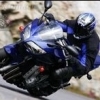As of why the Lotus turbines were competitive at Indy. The cars were indeed right up to the weight limit, an achievement in itself given the fact there was a 4WD driveline involved.
Another major advantage of the car was that it was one of the first at Indy that generated aerodynamic downforce so apart from improved roadholding in the corners due to 4WD, it also benefitted from high corner speeds due to aerodynamics
On race day the cars were underpowered compared to the piston engines due to weatehr conditions and the setup the turbines had to use in race condition.
As for the fuel consumption figures, the opponents primarily used turbocharged 2.8 liter engines of some 600 hp and Atmo engines of some 575 hp and since they ran on methanol fuel, their fuel consumption figures were way up on that of the 3 liter F1 engines of that day. So their figures were closer to that of the turbines than within F1 in 1971.
Make no mistake about the Lotus 56: in many ways it is one of the most revolutionary and innovative race cars ever built.
Henri




























